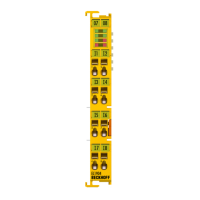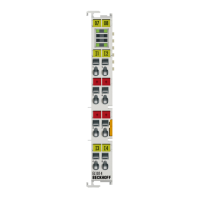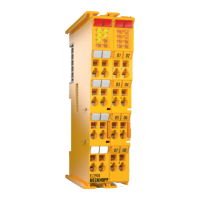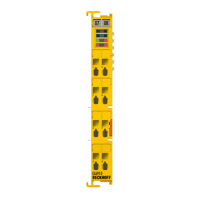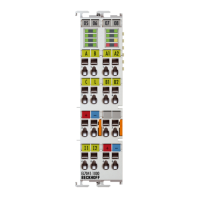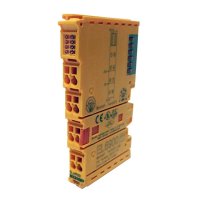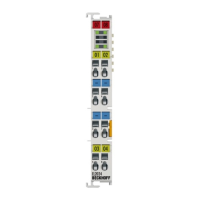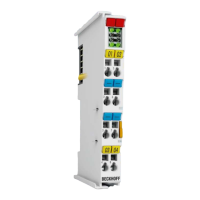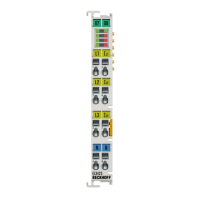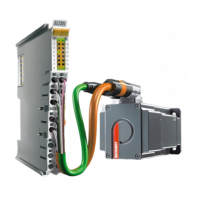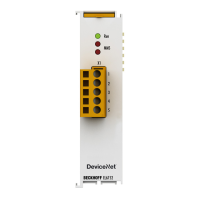Product description
EL1918 and EL1918-2200 25Version: 2.0.0
4.4 Safety parameters
Key data EL1918 and EL1918-2200
Lifetime [a] 20
Prooftest Interval [a] not required
1
PFH
D
3.00 E-09
PFD 4.90 E-05
MTTF
D
High
DC High
Performance level PL e
Category 4
HFT 1
Classification element
2
Type B
1. Special proof tests are not required during the entire service life of the EtherCAT Terminal.
2. Classification according to IEC 61508-2:2010 (chapter 7.4.4.1.2 and 7.4.4.1.3)
The EtherCAT Terminals can be used for safety-related applications within the meaning of IEC61508:2010
up to SIL3 and ENISO13849-1:2015 up to PL e (Cat4).
Further information on calculating or estimating the MTTF
D
value from the PFH
D
value can be found in the
TwinSAFE Application Guide or in EN ISO 13849-1:2015 , TableK.1.
In terms of safety-related parameters, the Safety-over-EtherCAT communication is already considered with
1% of SIL3 according to the protocol specification.
4.5 Safe input
The safe inputs and associated clock outputs are implemented as a single channel for each module. This
has the advantage that any channels, e.g. for a two-channel safe sensor, can be combined and used. For
error evaluation of these two channels, the Module Fault Link active parameter of the two modules involved
must be set to TRUE. This is the default state of this parameter.
DANGER
Clocked signals inside a sheathed cable
If clocked signals (clock outputs for the safe inputs) of different modules are used within a sheathed cable,
a fault of one module, such as cross-circuit or external feed, must lead to the disconnection of all of these
modules. This is achieved by setting the Module Fault Link active parameter for all modules involved. This
parameter is set to TRUE by default.
DANGER
Safe inputs in Kat.4 / PL e
If two safe input channels are to be used in a Category 4 structure, please ensure that you always combine
an even and an odd channel number.
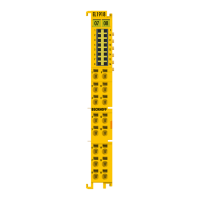
